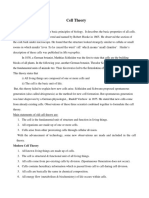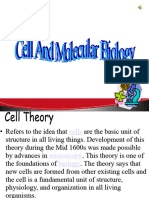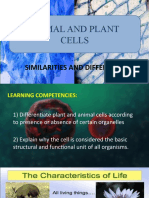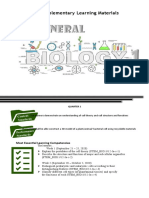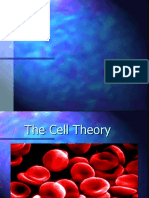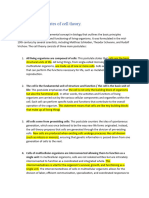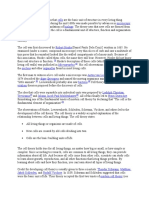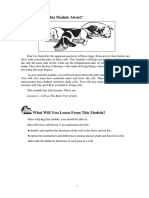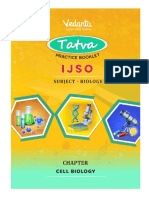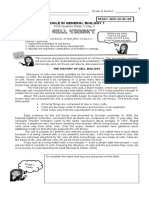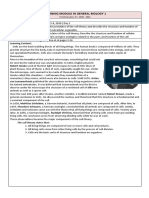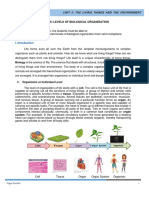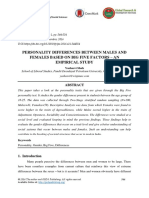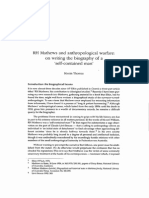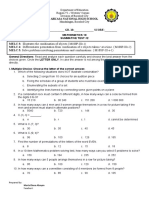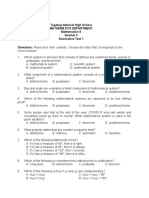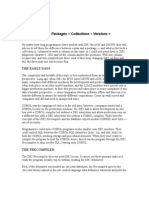0% found this document useful (0 votes)
111 views1 pageModule 7. The Cell
The document provides an introduction to the cell as the basic structural and functional unit of life. It discusses that living things made of single cells are unicellular, while those made of many cells are multicellular. The learning outcomes are to understand cell parts, differentiate plant and animal cells, relate cell functions, and appreciate cell scientists. The first lesson introduces the cell theory - that cells are the basic unit of life, all living things are composed of cells, and all cells arise from existing cells. Key contributors to the cell theory are also mentioned.
Uploaded by
Pretty SwanCopyright
© © All Rights Reserved
We take content rights seriously. If you suspect this is your content, claim it here.
Available Formats
Download as PDF, TXT or read online on Scribd
0% found this document useful (0 votes)
111 views1 pageModule 7. The Cell
The document provides an introduction to the cell as the basic structural and functional unit of life. It discusses that living things made of single cells are unicellular, while those made of many cells are multicellular. The learning outcomes are to understand cell parts, differentiate plant and animal cells, relate cell functions, and appreciate cell scientists. The first lesson introduces the cell theory - that cells are the basic unit of life, all living things are composed of cells, and all cells arise from existing cells. Key contributors to the cell theory are also mentioned.
Uploaded by
Pretty SwanCopyright
© © All Rights Reserved
We take content rights seriously. If you suspect this is your content, claim it here.
Available Formats
Download as PDF, TXT or read online on Scribd
/ 1

